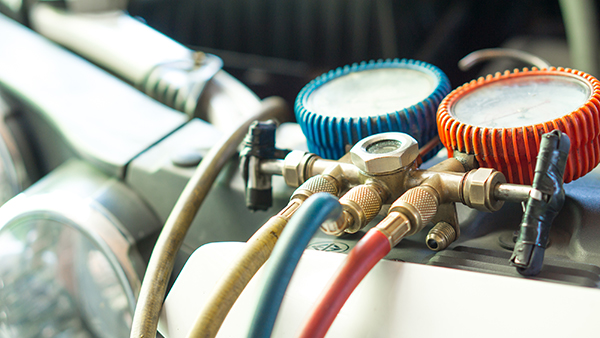
At Original Air, we’ve heard plenty of stories of non-professionals troubleshooting AC issues for hours, only to find a simple mistake they had been making or overlooking. These cases always boil down to a simple piece of advice: if you are not a licensed AC professional, please do not evacuate/charge on your own. Going to a licensed professional is always worth it to ensure that the job is done right.
Now that we have gotten that bit of advice out of the way, we've also seen many cases at Original Air of even the most experienced car people who don't understand evacuation. Even licensed AC professionals could use a quick summary, so this overview is for anyone who wants a review or a general understanding.
- There are three main purposes of an AC system evacuation: to check for initial leaks, to remove air, and to remove moisture.
- Initial leak check: When you evacuate an AC system, the low side should reach a minimum of 28-30" Hg within a short period, if everything is in order. If that's not the case, you know something is off.
- Removing air: This purpose of evacuation is essential to your AC system because there is only so much available volume within the system. Removing the air leaves room for the refrigerant and oil. Air removal also eases the initial charge of refrigerant into the system.
- Removing moisture: Finally, removing moisture is possibly the most important purpose of evacuation. This is because moisture is the leading cause of AC system failure. Moisture, when combined with refrigerant and lubrication, will turn acidic and will eat up your AC system from the inside out, which is as bad as it sounds.
- We recommend 30-45 minutes of evacuation at 28-30" Hg of vacuum because moisture won't be drawn out by the vacuum pump unless it boils and the longer the evacuation, the more moisture will be removed. Running it for too long will result in reaching a diminishing point, but 30-45 minutes is the sweet spot, in our opinion.
In summary, evacuations should be 30-45 minutes at 28-30" Hg and you'll need a new filter drier. Let the AC system sit for 10 minutes. If the vacuum loss is less than 2" Hg, you’re ready to charge. After charging, you'll need to do an electronic leak test. But all that being said, don't do your own AC system evacuation if you're not a licensed professional. For any further questions or concerns, contact Original Air today!
